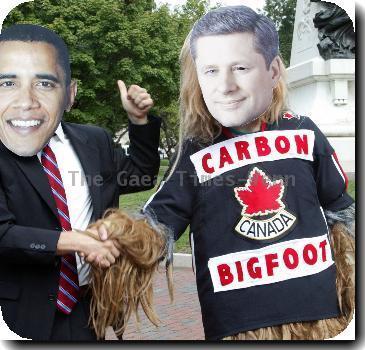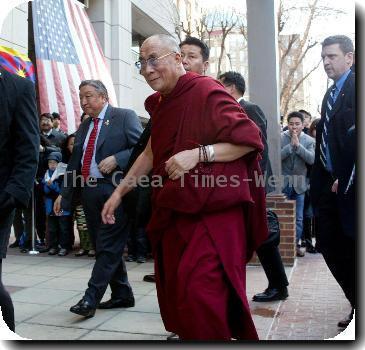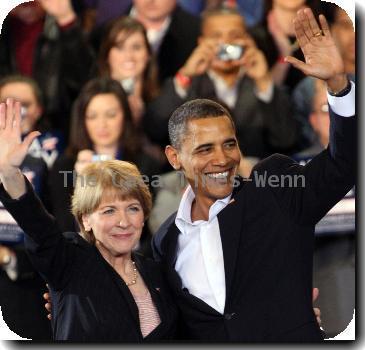The second time, Obama likely to pick next Supreme Court nominee the same way: on his terms
By Charles Babington, APSaturday, April 10, 2010
Obama emboldened for another Supreme Court pick
WASHINGTON — Emboldened by success the first time around, President Barack Obama is likely to pick the Supreme Court nominee he wants and let the confirmation fight proceed from there, putting huge emphasis on a justice who would bring a fight-for-the-little-guy sensibility to the job.
Politics will certainly play into Obama’s calculus: He no longer has the votes in the Senate to overcome the delaying tactic known as the filibuster, and a minority Republican Party in fierce opposition to Obama’s agenda has little incentive to hand him a win just months before House and Senate elections.
But Obama’s strategy worked when he chose Sonia Sotomayor to replace Justice David Souter last year — announce the criteria he deems the most vital for a nominee, vet the nominees with no embarrassing gaffes or leaks, and pick the one with whom he feels the most comfort.
Confirmability was a factor then, not a driver. Expect much the same now.
Obama’s task is to replace the liberal lion of the court, Justice John Paul Stevens, who on Friday announced his coming retirement.
In quick succession, Obama has a rare chance to choose two justices who could shape the court’s rulings for decades. He has given every sign that he approaches this decision the way aggressive coaches prefer to call strategy — playing to win, as opposed to playing not to lose.
In choosing a nominee over the next few weeks, Obama is inclined to stick with his formula of going all in, like he did in getting a health care reform law, the biggest and most consuming fight of his presidency. The view from the White House is that the president is almost certain to face a political and ideological fight in this election year no matter whom he nominates to the court; the only issue is to what degree.
So why scale back?
What’s more, Obama has shown an aggressive streak when it comes to the nation’s highest court, one sure to shape his thinking in picking a nominee.
Obama openly criticized the court for a January ruling that allowed corporations to spend freely to influence elections. And he did that during his State of the Union address with six justices sitting in front of him, drawing a rare, dismissive reaction from Justice Samuel Alito, one of the court’s conservative members.
Stevens had strongly dissented in that corporate-friendly campaign finance case, saying it did nothing less than threaten “to undermine the integrity of elected institutions around the nation.” And Obama all but referenced the court ruling when he said from the Rose Garden on Friday that he is poised to choose a nominee who “like Justice Stevens, knows that in a democracy, powerful interests must not be allowed to drown out the voices of ordinary citizens.”
It is this criterion — Obama has called it empathy, or seeing life and the law through others’ eyes — that defined his choice of Sotomayor.
It seems sure to do so again this time, inviting a political fight.
Sotomayor’s confirmation itself was, for the most part, a hardened partisan battle. The vote was 68-31, with Democrats unanimously behind her and most Republicans opposing her choice and Obama’s judicial standards. Yet not lost in all that was that nine Republicans voted to confirm Sotomayor.
Among them was conservative Sen. Lindsey Graham of South Carolina. He offered sharp questioning during confirmation hearings and found some of Sotomayor’s views troubling, but ultimately considered her well qualified and, importantly, showed deference to Obama’s prerogative by saying “elections matter.”
Obama hopes to get at least one such Republican supporter this time — and in purely practical terms, one is all he needs. Democrats and their allied independents hold 59 seats in the Senate, one short of the 60 needed to overcome a vote-killing delay maneuver.
Confirmation itself would require a simple majority. And while senators take their “advise and consent” role seriously and members of the president’s own party don’t like their votes taken for granted, Obama clearly enters the process in a strong position, unless surprising questions emerge about his nominee’s record or behavior.
Barring that kind of trouble, Obama’s biggest risk is choosing someone that so riles Republicans that all 41 unite against him or her.
Obama’s White House does not appear to be giving that consideration any extra weight in relation to all the other factors he will consider. Among them: intellectual rigor, integrity, experience, gender, race, philosophy, plus any controversial rulings or statements that could turn confirmation from tough to untenable.
The Sotomayor experience gives Obama a head start in other important ways.
Many candidates have been vetted, and a few were even interviewed last time. So the White House already has its list of names under consideration. The confirmed number is about 10, and it is likely only to shrink, not grow.
The three names that come up the most are Solicitor General Elena Kagan and federal appellate judges Merrick Garland of Washington and Diane Wood of Chicago. The White House has done nothing to squelch speculation about those three but also revels in knowing Obama could blow away conventional wisdom.
Even the timeline will likely be replicated, putting hearings in midsummer and an up-or-down vote for the nominee before the Senate breaks in August.
Obama promises to pick a nominee quickly. There seems no obvious reason he could not do so within the same timeframe — 25 days — that elapsed between Souter’s retirement announcement and Obama’s selection of Sotomayor.
The partisan atmosphere is only worse this time. But Obama’s game plan seems the same: choosing a nominee on his terms.
Tags: Barack Obama, District Of Columbia, Judicial Appointments And Nominations, Legislature Hearings, North America, United States, Washington



